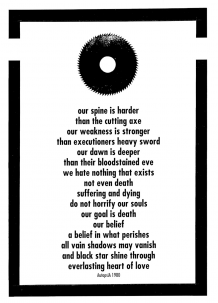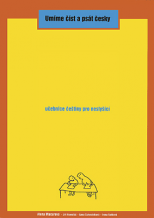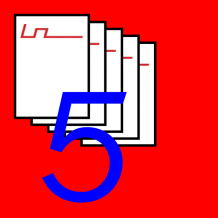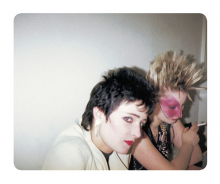|
A bad economy is good for the art scene. Ever since the recession arrived in Munich, young artists have no longer felt the need to go to Berlin in order to find affordable working conditions. Spaces now stand vacant in southern Germany, too, studios are getting cheaper and the conditions required for an art scene beyond the institutionalized versions have improved. Aside from the big museum houses and established galleries, off space hotspots have emerged featuring an independent subculture that is slowly beginning to cut a swathe across the strictly defined borders dividing the disciplines and in which a vital club scene with music and performance groups have also found a home.The seeds of change for this movement really took root in Munich, at the Münchener Akademie. As musty and self-satisfied as the city itself, no real movements of note had really emerged from there since the sixties. But in the 1990s, under the direction of Ben Willikens, doors began to open up, receptive to new ideas, and a more pronounced international focus began to develop within its walls. Generational change in the professorship brought Olaf Metzel, Günther Förg, Markus Oehlen and the theoreticians Walter Grasskamp and Florian Matzner to the Academy, and the Ludwig-Maximilians University (LMU) started offering interdisciplinary lecture series like ‘iconic turn.’ At the Haus der Kunst, Christoph Vitali began to stage exhibitions with young, local artists (such as Scharf im Schauen in 1994) while more and more galleries began to take it upon themselves to take a risk and display work by young artists before they were generally known to the public.Although Berlin is still the first and decisive locale for artists both following and to a certain extent even during their studies, many young artists personally regard their beginnings in quiet southern Germany, well-beyond the reaches of the overheated Berlin art scene, as positive for their work. The environment allows for quiet, steady work and an unobstructed view into the depth of things people grapple with in rural areas. This is perhaps because, generally speaking, diversions are few—along with the possibilities of relating images from within in different ways. Artist Michael Sailstorfer’s work deals with his childhood in isolated lower Bavaria and the impetus to get around that he took upon himself each day when traveling to school and back on the school bus from Velden to Vilsbiburg.For his piece Living Without Transportation Connections the academy student set up four bus stop shelters, much in the manner of residences, along a country road that snakes its way somewhere between lower and upper Bavaria. He installed doors and windows in the draughty shelters, set up electric power, running water, lights and a toilet, and even included a table and chairs. The experience of an existence between home and being on the move manifests itself in his work Heimatlied (Song of the Homeland) as well. Sailstorfer built a metal house out of four old motorhomes, including a fully functional set-up. The assembled building, with its gabled roof and right angles, references grounded existence as an immobile construction, the erstwhile mass-produced caravan for life on the road. Consequently, his pieces can be read as an attempt at creating a kind of synthesis of separate worlds (and ways) of living; indeed, they are reinterpretations that not only tell stories about things, but about life itself, as well. The vehicle for these stories is defined in the chosen starting material, injected with meanings from the past—and the space, crafted as something of a technological joke, is its sounding board.Because he isn’t genuinely creating something new but rather reshaping something that already exists, Sailstorfer is actively conserving materials in an age in which things that have run their course are quickly discarded. In as far as he shrinks outdated items into smaller, durable units, he succeeds in rescuing memories. Sailstorfer built a sofa out of demolition materials from a house at Munich’s Heterichstraße 119 that he perceived in design and color as a portrait of the house itself. The photography of the one-time house hangs, framed, on the wall above the furniture. The original and target object were thus joined as a unit of dialog.By contrast, Sailstorfer’s piece Drei Ster mit Ausblick (Three Steres -Cubic Meters of Wood -with a View) was much more radical. Along with Jürgen Heinert, he ignited a small wooden house in flames in a field using the oven from his own home. The title itself already had reduced the hut—and the act of living itself—to a heating value, a sum of its material. The work has remained a singular one in the life of the young artist; the transformation into nothing more than smoke was perhaps too destructive for him, and the result perhaps not tangible enough: At the end of the event, which lasted a whole day, nothing more remained in the empty field of his childhood—save the glowing oven.Andrea Hanak’s work also reflects images and places of her past. Using journal entries and sloppy watercolors of a somber fairy-tale world, she’s also reaching deep into the well of our collective memories. Her space installation, Innenwelt, Außenwelt (Internal World, External World) begets a world-weariness and sense of being misunderstood, of the recognition when growing up that childhood was perhaps not as pure as one had been led to believe. Sweet drawings of lilies and verbal eruptions on yellowed computer paper are pinned onto a wallpapered wall. The happy ending of children’s fairy tales increasingly collides with a wide-open and forward-looking reality. A sombre, faded brown color, symbolic of a kind of German burden, rises from Hanak’s magical world of images, as if emerging from a fog. It is a token from a mythical world full of intimations and references in which the strangeness of things is perceived as but a scratch on the surface of reality. Notable is the ambivalence of beauty, and its fragileness, of a pure world and the lurking horror within it, the ambivalence of delight of fear which the 18th century poet and romantic Novalis spoke of when referring to the ‘inner relationship’ of ‘pleasure’ and ‘horror.’Andrea Hanak grew up just south of Munich in Wolfratshausen, not far from the Starnberger See, a lake that’s filled with the air of summertime meadows—and its children’s fairy-tale park—emerging as from the shadow of the nocturnal acts performed under moonlight of Bavarian King Ludwig II, who was drawn by madness into its murky depths forever.The thematic world that her watercolors inhabit is quite at home within the tradition of that dark romanticism that explored the darker sides of the human soul at the end of the 18th century. Indeed, Hanak declines to clearly define her ominous artistic secrets per se, yet they do permeate the darker part of her imagery, juxtaposed against a formal airiness, almost a transparence in her work. With pieces such as Abendmahl (Last Supper), Speisung der Zehntausend (Feeding the Ten Thousand) and Box of Jericho, artist Benjamin Bergmann injects the titles of his work with references to myth and religion. Religion offers us catchwords that instantly strike a chord—quite comparable today with the omnipresent slogans of advertising about us. For his installation Abendmahl, he disassembled an old cabinet and built a wooden alcove out of it, complete with curtain and window, along with two chairs, muted lighting and a table. The religious aspect of the piece is immediately recognizable because the sculpture—even in its solemn external form—reminds one of a confessional. The title Last Supper relates to the table and two plastic plates that are also incorporated into the piece.Two drills are present, possibly capable of setting the plates in motion, rotating, but remain inactive in this piece—the aspect of movement is only included in the sculpture as an inherent possibility. Yet this is similar to earlier Bermann pieces, his Feeding of the Ten Thousand and Fast-Food Restaurant, both of which drastically thematically embody several of his main concerns, such as the themes of abundance and acceleration, and which basically hurl and sling edibles through space or against the protective glass of the installation. Another of his intentions is to bring a performative aspect into his work. Increasingly, however, simple presentation of the themes suffices; the visitor has the possibility of completing the work according to their own whim or imagination.In the piece And I Want To Know It, Sometime, Bergmann constructed a wooden track which invites the spectator to take a ‘mental test ride’ on a bicycle. After a steep push-off leading into a sharp curve, the trip ends abruptly in an impassable narrow loop. A net and a large number of cardboard boxes catch the rider at the end of their mental crash landing. “Faster, faster, more and more, that’s symptomatic of the way people are today. We move quickly towards something without even knowing what it is we’re actually moving towards,” commented Bergmann recently; he grew up in the western Bavarian town of Würzburg. It is perhaps for that very reason that his thematic interests lie in the realms between speed and acceleration, between sensation and spectacle—in Bavaria, the land of hi-tech and BMW, always a synonym for traveling in a sporty way: “I wanted to achieve a kind of acceleration that self-destructs, running over itself in the end.”He even creates moments of danger for himself and challenges observers to deal with and address different risks and fears. “People are moving faster and faster, but they’re not really changing at all. We still die in car crashes and wars are still being waged in the name of God.”Whether it’s the perceived, threatening danger right in front of the viewer when, for instance, a lawn mower blade is spinning at a high rate in front of their head (Stallung, or Mews), the artist mentally engaging visitors in a concrete installation on detailed levels such as in And I Want To Know It, Sometime or simply using a scaled-down version of a looping train (Grand Centrifugal Railway), there’s a graded difference from one piece to the next.If Bergmann is an artist who gets his ideas from the daily, banal surroundings of petty bourgeois life with a penchant for technology, fellow artist Martin Wöhrl scratches at the surface of Bavarian self-understanding, between its upper and lower ends, in his piece Asam-Block. His over-proportioned pink spigots made from rough hewn styropor (almost fondly and yet ironically) remind one of Bavarian Baroque Catholicism, referencing cultural history incorporating the rococo-stuccos of the famous Asam family of sculptors along with long-standing Bavarian beer tradition. ‘Asam Bock‘, which is an especially strong, dark beer and well-known internationally, is brewed in the oldest monastery brewery in the world, the Klosterbrauerei Weltenburg. And it so happens that one of the most important artistic creations of the Asam family can also be viewed in the monastery church there. Thus this convergence of art and beer is not only exemplary of the interplay between higher and folk cultures, but rather also for the sense of pride in the local brand of Catholicism, the close connection of church and inn, of religion and life. Wöhrl draws on the past, upon a long formulated cultural code, staging the cultural icons of his environment anew, lending them different materials, surfaces and formats. The spigots made of light styropor really have the effect of having been fashioned with a chainsaw. Yet this pink object is no less a fake than the Asams’ plastered ornamentations that presented an illusionary appearance, often made from cardboard thin facings that they used in local churches.The referential character of the Asam-Block piece is just as far-reaching as it is simple. In the internal play of the spigots made from cheap, light and simple materials and in his selection of the piece’s title, complex reference points become evident. Wöhrl entwines a whole series of aspects of history, culture and lifestyle in his work in a postmodern referential conglomeration, all encapsulated in the guise of this pink spigot.Florian Süssmayr, a lifelong Munich resident, takes another path altogether. As an art outsider who never attended the Academy, he paints his pictures directly from urban ‘unculture’ between the soccer pitch, punk music and the pub. Süssmayr, once a cameraman, has a natural eye for the picture. He personally sees himself as a collector of things that other people leave behind: carved inscriptions in pub tables, anonymous messages on walls of public toilets and train underpasses. Signs of loneliness and lack of communication, of daily misfortune and cheap schnaps. Süssmayr unmasks a world of self-righteousness and of proud respectability that his fellow Bavarians seem to brag about so willing. He uncovers little truths and brings them into the glaring lights of the galleries and the jaded world of art. The things he’s doing, however, are really excerpts and spatial displacements of existing, real images, along with their radical decontextualization. Little sayings such as ‚”Hey, you assholes,” “Shit,” “Seeking old, fat pig...,” “Would like to have someone shoot me up daily...” now line gallery walls. In so doing, he either directly draws his motifs as excerpts of the originals or he paints—circuitously drawing from photography—on glass, canvas or masonite.Süssmayr documents his own life and simultaneously provides a kind of situational review of a Bavaria from below, well beyond the fairy-tale, picture book Bavaria, quite comparable to the quick and unsparing photography of Nan Goldin. In almost log-like fashion, his pieces provide a precise assessment of individual, selected themes. They are documents, firmly set in space and time, authentic in their totality as a mirror of Munich today. (From a show at Hofbräuhaus, 1.15. – 2.26.2003).For all the variations in method or idea they might employ, the same things are basically motivating young artists throughout southern Germany today. Whatever realm their themes might come from—whether rural or urban, subculture or high—however much irony or seriousness instills their language, they all possess a fundamental skepticism toward the inflated bloatedness that both the state and economy trumpet as the Bavarian self-image of ‘laptop and lederhosen’ and do not hesitate a moment in placing truth before economic austerity. Questioning such slogans in the way that Benjamin Bergmann or Michael Sailstorfer do, or at least treating them ironically in the way that Martin Wöhrl does, as well as confronting one’s own fears and insecurities like Andrea Hanak and other, hidden realities like Florian Süssmayr all amounts to the concerted reaction of a new, serious generation of artists emerging in the South.
Artículos recomendados

|
|
If you know your way around, you might discover that every month and maybe even every week you stand the chance to receive money for your cultural project. Successful applicants have enough money, average applicants have enough to keep their mouths shut, and the unsuccessful ones are kept in check by the chance that they might get lucky in the future. One natural result has been the emergence of…
|

|
|
“La persona debe sacudir tres veces la mano de alguien mientras mantiene fijamente la mirada en sus ojos. Así es como es posible memorizar el nombre de una persona con certeza. De ésta forma es como he recordado los nombres de las 5000 personas que han estado en el Horse Hospital”, me dijo Jim Holland. Holland es un experimentado cineasta, músico y curador. En su infancia, sufrió al pasar por…
|

|
|
Borrowing heavily from fairy tales, fables and science fiction, the art of Magda Tóthová revolves around modern utopias and social models and their failures. Her works address personal and social issues, both the private and the political. The stylistic device of personification is central to the social criticism emblematic of her work and to the negotiation of concepts used to construct norms.…
|

|
|
There is nothing that has not already been done in culture, squeezed or pulled inside out, blown to dust. Classical culture today is made by scum. Those working in the fine arts who make paintings are called artists. Otherwise in the backwaters and marshlands the rest of the artists are lost in search of new and ever surprising methods. They must be earthbound, casual, political, managerial,…
|
|



































 We Are Rising National Gallery For You! Go to Kyjov by Krásná Lípa no.37.
We Are Rising National Gallery For You! Go to Kyjov by Krásná Lípa no.37.
Comentarios
Actualmente no hay comentariosAgregar nuevo comentario